AMD Vision: Ready For Take-Off
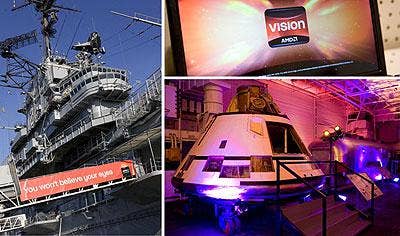
Advanced Micro Devices launched its new Vision marketing campaign Thursday at an auspicious venue -- the retired U.S.S. Hornet aircraft carrier. The Hornet, now a museum docked in Alameda, Calif., fought in the Pacific during World War II and was the vessel that fished out the Apollo II astronauts after their historic moon trip and command module splashdown in the ocean.
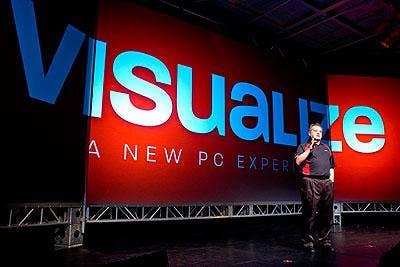
Nigel Dessau, AMD's chief marketing executive, kicks off the Vision event on the U.S.S. Hornet. With Vision, AMD takes a page from Apple's marketing handbook and ditches all the talk about the speeds and feeds of its components -- instead wooing consumers with simple messages about the PC experience they'll get with different PCs built on AMD processor and graphics platforms.
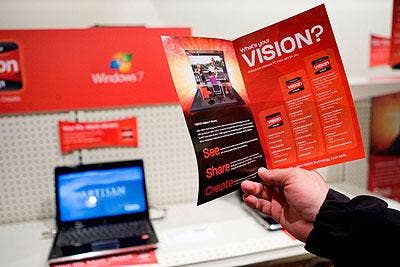
Gone are the thick booklets full of clock-speed and floating point specs at the point-of-sale for AMD-based PC products. AMD's retail literature for Vision is as thin and light as the next-generation AMD-based notebooks that were on display at a mock retail environment AMD set up on the Hornet to show Vision in action.
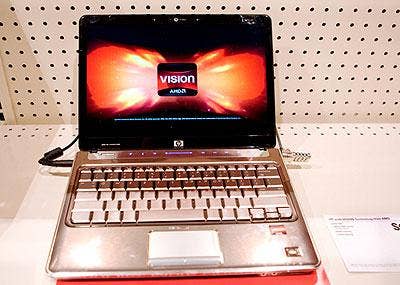
Among the new AMD-based notebooks that will be sold at retail under the Vision banner were several Windows 7-loaded units from Asus, MSI and Hewlett-Packard -- such as this yet-to-be-released thin and light HP notebook built on an AMD processor and ATI graphics.
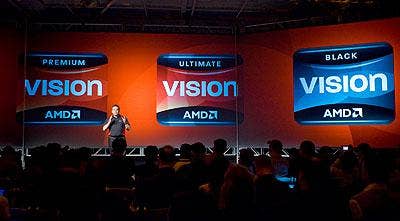
Instead of slapping dozens of stickers on different PC configurations, AMD now limits itself to just a few under the Vision campaign. The plain Vision sticker indicates a basic PC that meets users' entertainment needs, Vision Premium PCs provide enough horsepower to manipulate media a bit more, and Vista Ultimate indicates a system that's powerful enough for actual content creators.
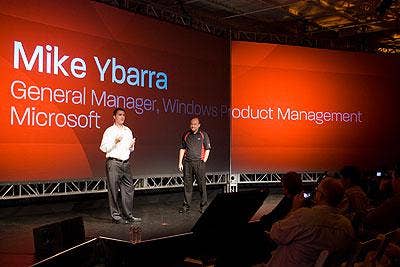
Microsoft's Mike Ybarra, left, was one of the AMD partners on hand for the Vision event on the Hornet. Speaking here with Neal Robison, director of developer relations at AMD, Ybarra praised AMD's readiness for Windows 7 and especially the new Direct X 11 multimedia APIs that accompany it.
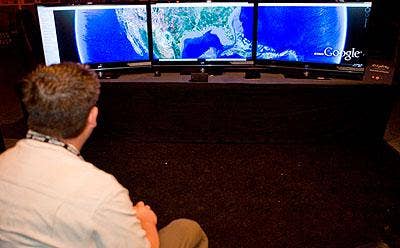
AMD also introduced a technology it calls Eyefinity at the Vision event. Eyefinity enables HD resolution across multiple displays running from a single PC with multiple ATI graphics cards, or even just one. The giant three-screen display behind the main stage at the event was powered by a single PC and Eyefinity, while other demos showed videoconferencing capabilities and here, Google Earth in triplicate.
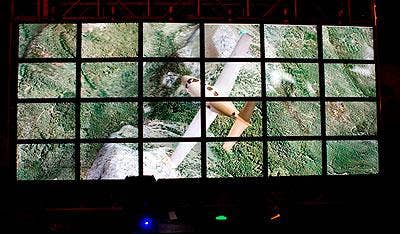
AMD Eyefinity can power up to 24 displays from a single PC, as shown here on the U.S.S. Hornet during Thursday's Vision event. And with display makers like Samsung producing products with thinner beveling, the cross-hatch effect of running a single image on multiple monitors should be less obtrusive soon, AMD executives assured the crowd.

Rick Bergman, senior vice president of AMD's Products Group, teases the coming release of the ATI Radeon HD 5800 series of graphics cards. Describing the coming GPU as "the most powerful processor ever," Bergman said the new cards would deliver 2.5 teraflops of processing power at the same price points as AMD's current ATI Radeon 4800 generation of GPUs.
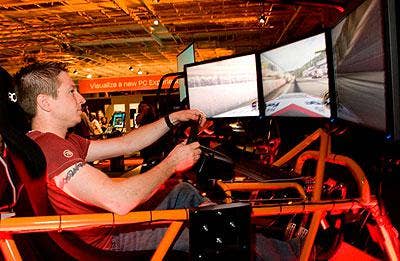
What would an AMD event be without lots of gaming? Direct X 11 video games on offer for attendees at the Vision event included "Dirt 2," a rally car driving game. With three displays powered by AMD Eyefinity, it's almost like you're really kicking up dust.